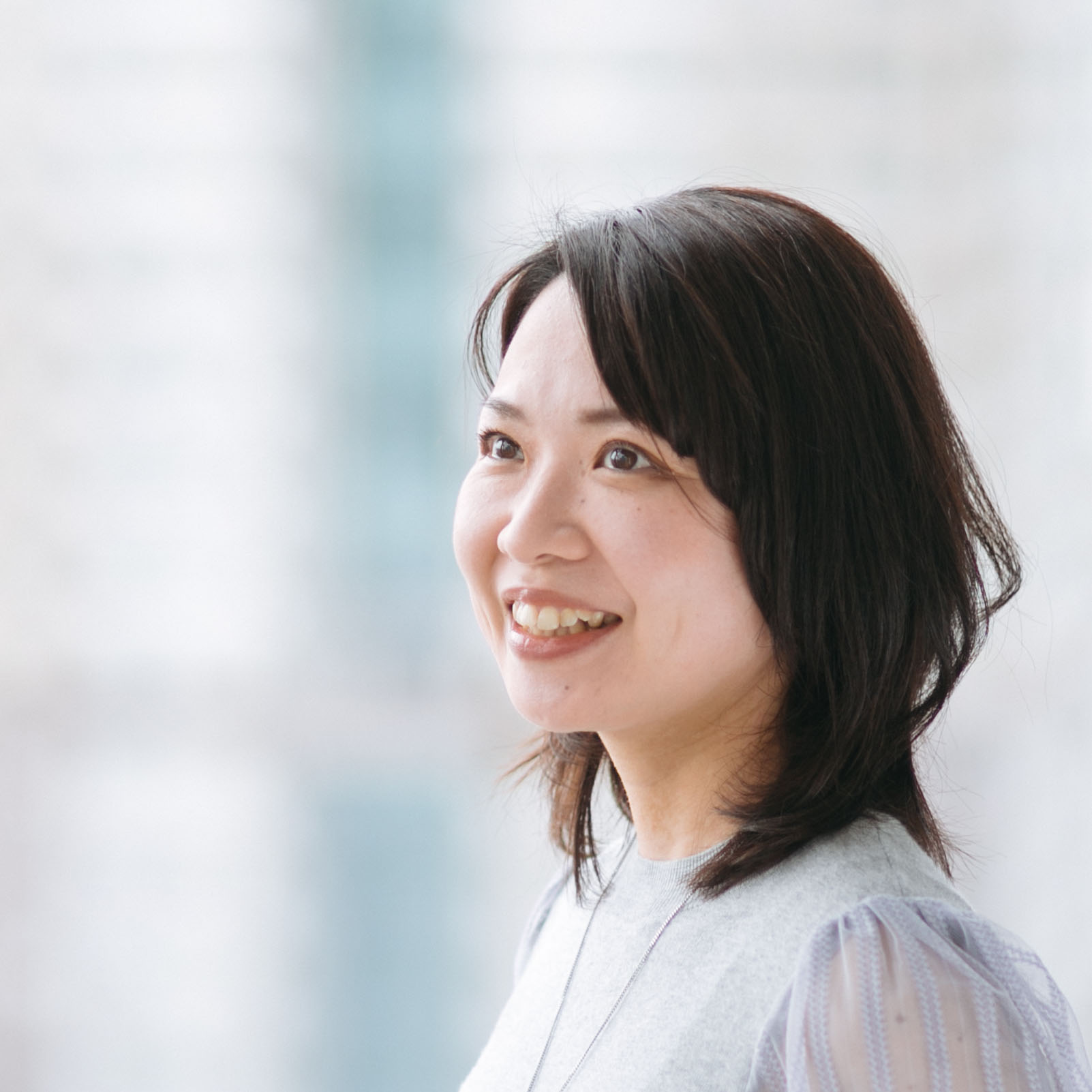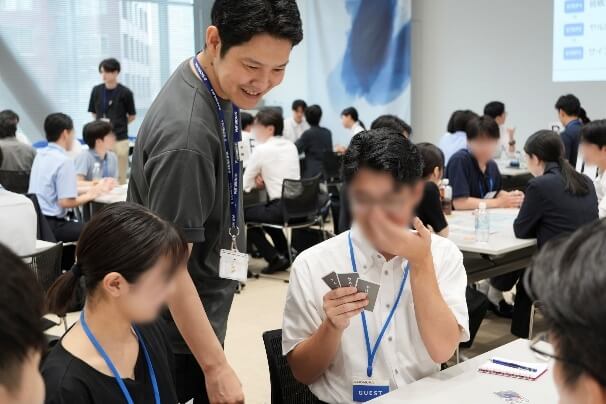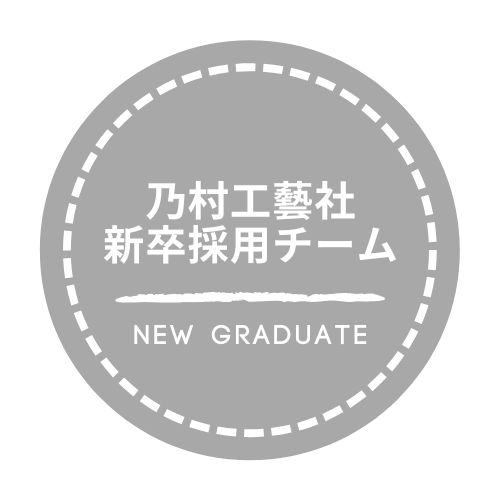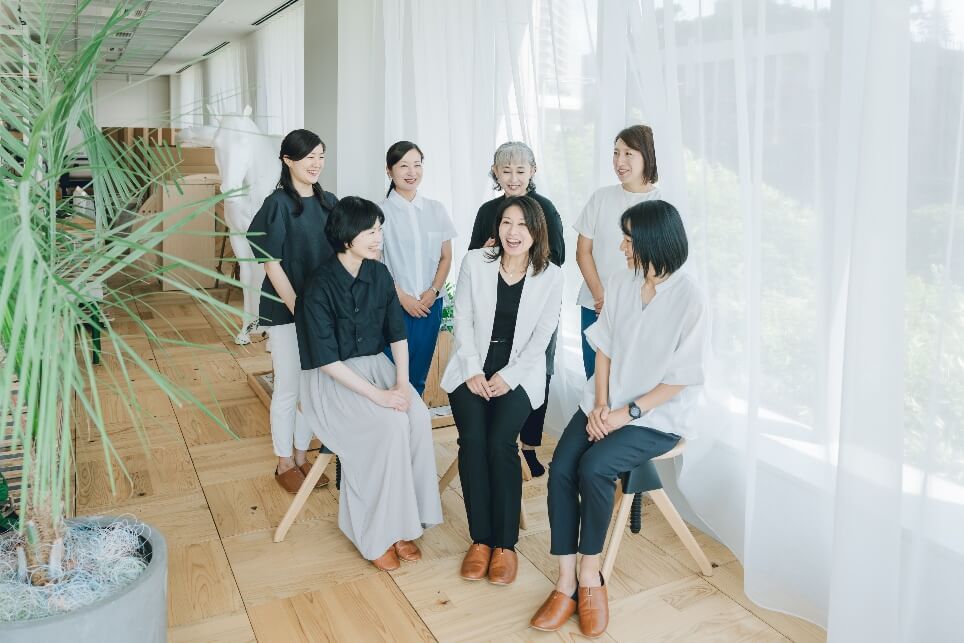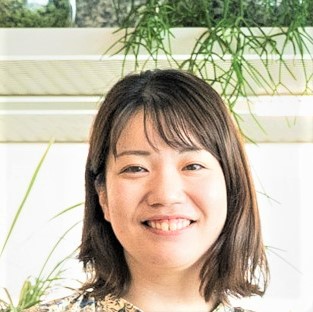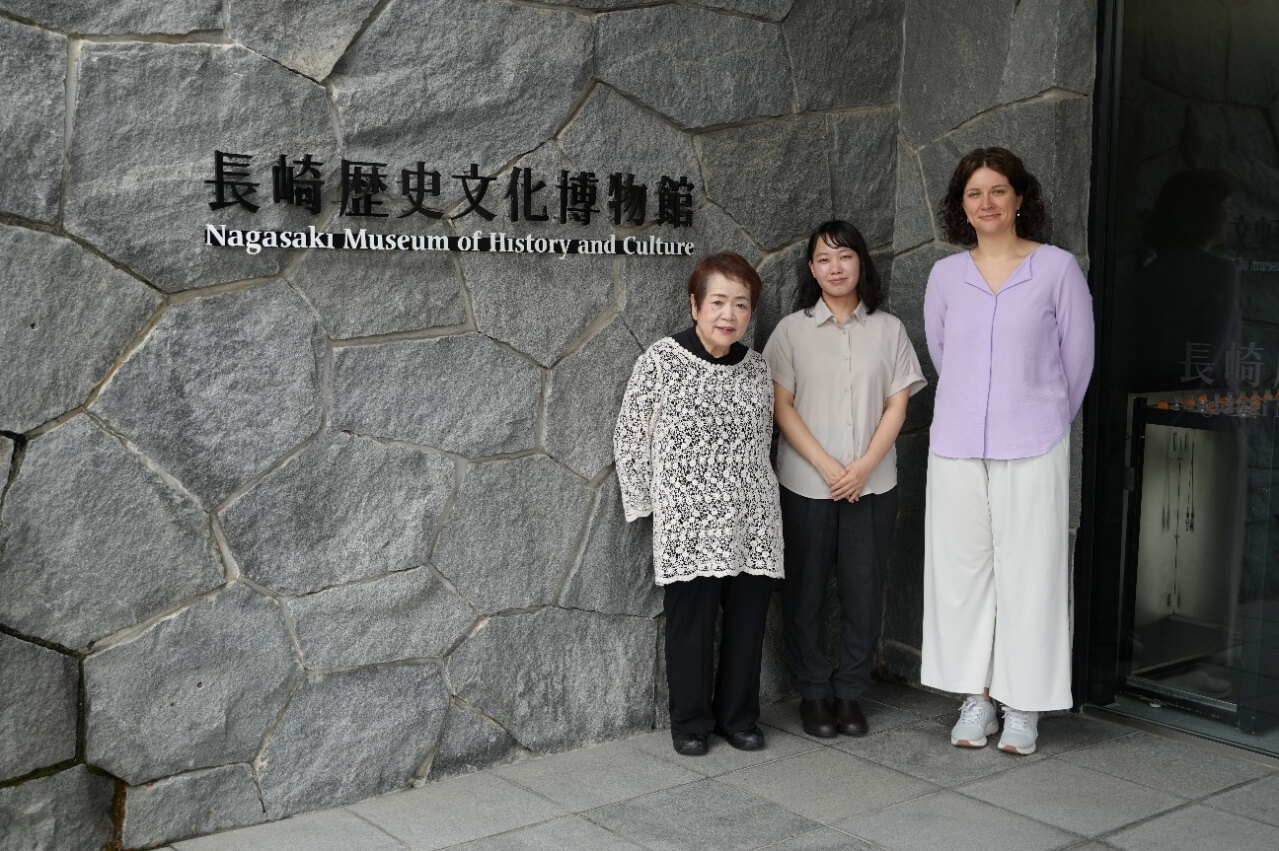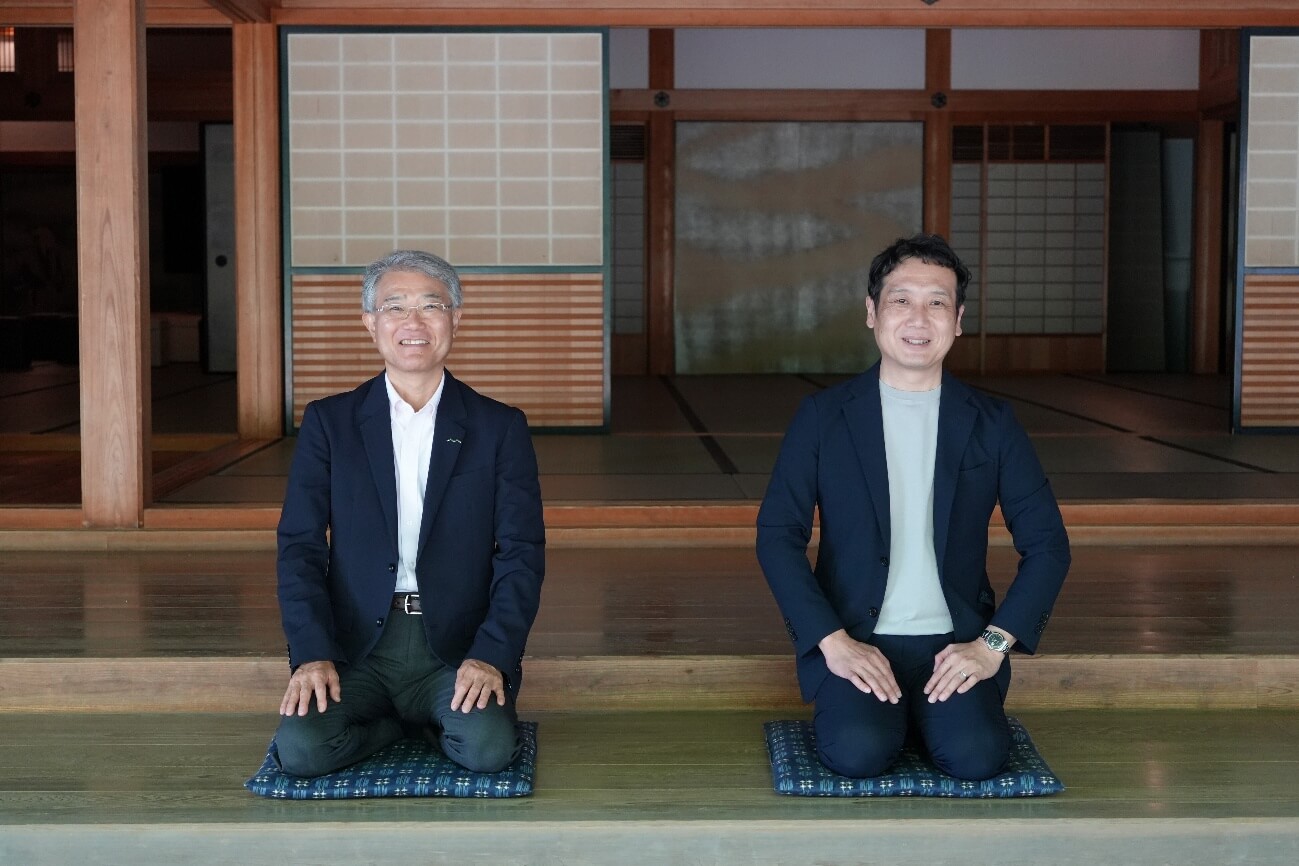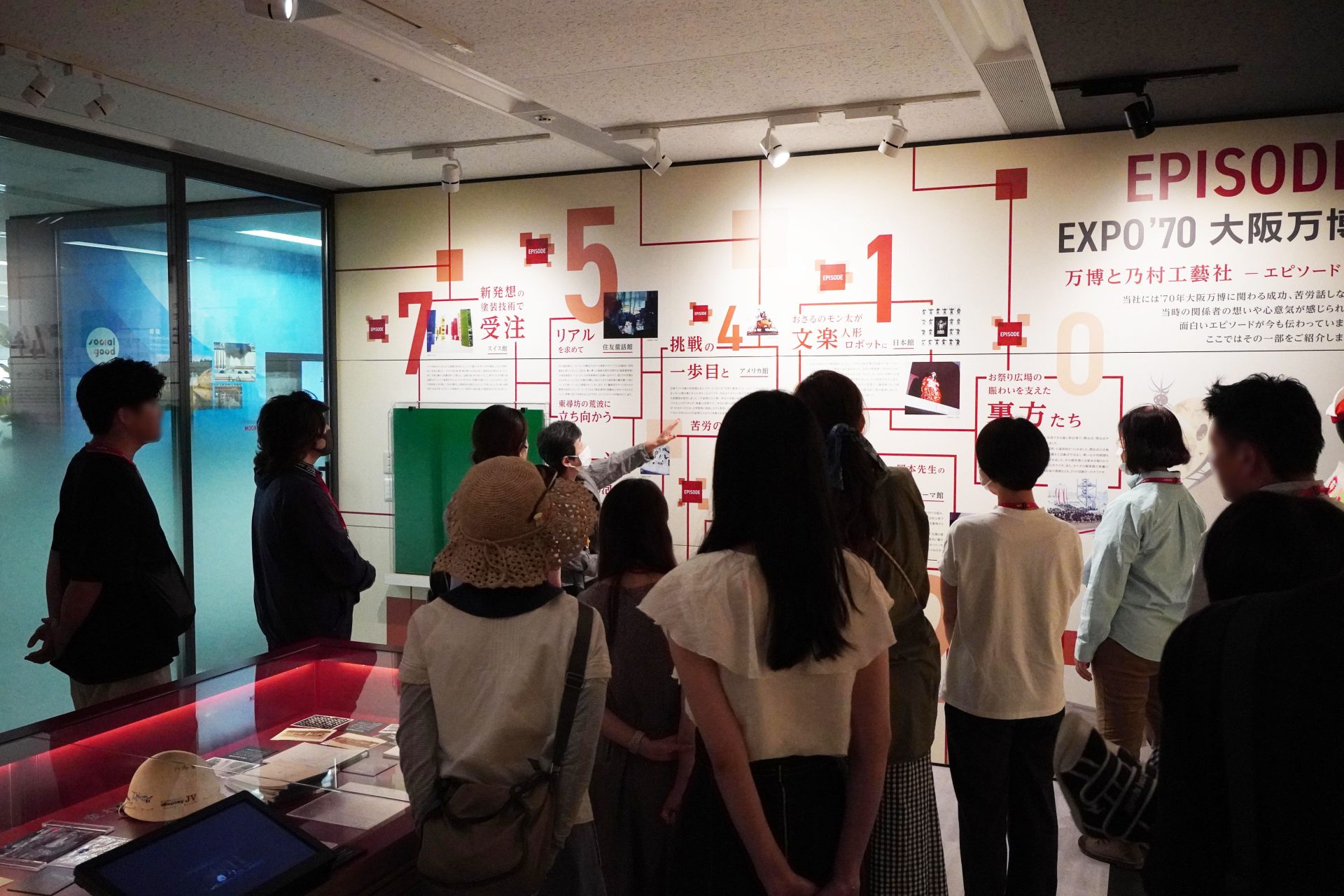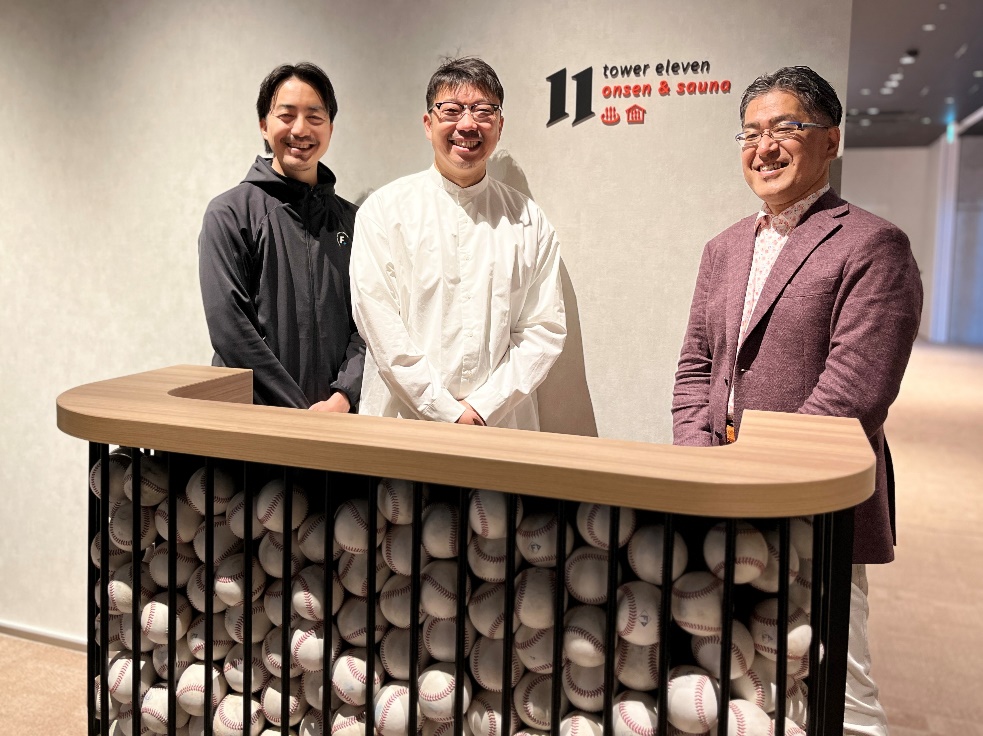
How to create a place for everyone to learn from Kageoka House
2021/11/24- text and edit by
- Satoko Yokota
In recent years, the term “inclusive design” has become popular. Amidst the trend of creating spaces that are conscious of accepting all kinds of people, local community facilities in particular are shifting from limited targets such as children and the elderly to “everyone” targeting people of all generations and positions. Many places have been created with the theme of
Among them, the facility that I was interested in was "Kageoka's House". This is a local exchange facility created with the participation of various creators, with the theme of "children and food", aiming to be a place where people of all generations can naturally gather and snuggle up. (Click here for an overview of the facility / Click here for people involved in the creation of the facility)
When I went to see the facility, I saw preschool children playing freely in the bright sunshine, elementary school students having a great time playing table tennis, and children lounging around in the hall doing their homework and playing games. , college students practicing band performances in the studio... A wide range of generations found their own place and spent their time in their own way.
To find out the secret behind the success of "Creating a place for everyone", we interviewed Ms. Kisako Omi, the representative of Mother Dictionary and the director of "Kageoka House".

Traditional culture as an opportunity to connect all generations
Yokota
When I toured the facility, I felt that it was wonderful to see people of various generations spending their time in their own way and interacting naturally with each other. It really embodies the theme of "a place for all generations". Were there any ingenuity in the creation of the space when it was first launched so that people of a wide range of generations could use it?
Mr. Omi
I think that it is easy to set up a period of time for “intergenerational exchange” at events, etc. I felt it was necessary. Therefore, we created a large hearth on the first floor to create a place where everyone would want to gather. The area around the sunken hearth is an image of a porch, and the large space is an earthen floor. You can relax by sitting around the fire in the sunken hearth, or you can sit on the porch without taking off your shoes and talk to the people beside you. It is made with the traditional Japanese space in mind.

 A space surrounding a large sunken hearth. Before Corona, events were held where everyone gathered around the hearth, grilled rice cakes, etc.
A space surrounding a large sunken hearth. Before Corona, events were held where everyone gathered around the hearth, grilled rice cakes, etc.
Yokota
In the urban location of Ebisu, I don't think there are many opportunities to come into contact with a space like a traditional Japanese house.
Mr. Omi
I agree. Because it is an urban area, I was conscious of valuing natural materials and warmth. First of all, I wanted to cherish the thought that I want to incorporate traditional Japanese culture.
Yokota
So you had an image of connecting people of various generations, especially the elderly, through traditional culture.
Mr. Omi
However, it is quite difficult to suddenly say to elderly people, "Please play with the children." In the sense of creating a spontaneously necessary situation, interaction between generations will naturally occur by being able to play an active role in games that grandfathers used to play a lot and were very good at, such as tops, menko, stilts, shogi and go. Good, I thought. The grandmother is knitting, cradles, origami, making miso together, and pickling pickled plums... By making use of the wisdom that comes with age, you can make discoveries like, “Wow, you can do this!” The most important thing was that I was happy to receive it, and that I wanted to create a system where both parties could communicate without difficulty.

 On the day of the interview, an event of "old days play" will be held. It was impressive to see elderly people having fun together while teaching children how to play.
On the day of the interview, an event of "old days play" will be held. It was impressive to see elderly people having fun together while teaching children how to play.
Floor composition that creates a moderate gradation of interaction
Yokota
The first and second floors of Kageoka House are multi-purpose spaces for everyone, the second basement floor is a room for music and dance, the first basement floor is mainly for elementary school students, and the third floor is for infants. I felt that it was an excellent plan, where each generation has a clear place to belong, and at the same time, you can feel the flexibility of loose connection. Was there anything you were conscious of when creating the world view of each floor?
Mr. Omi
From my experience of building two facilities (Kazoku no Atelier / Daikanyama Teens Creative) and my own experience of raising children, I felt that a room where a baby and an elementary school student share a room is a peaceful scene. On the other hand, I think there are places where both parties are concerned. Babies are startled by the energetic way elementary school children play, and mothers also become concerned about their babies. On the other hand, even though elementary school students want to play energetically, they have to refrain from saying, "Please be quieter." I thought it would be better for both of us to divide it. Therefore, we prepared both a space where everyone can play without hesitation and a place where everyone can spend time together.

 On the 1st basement floor, there are scenes where young children climb up on metal athletics, and elementary school students and the elderly enjoy playing table tennis. On the 3rd floor is a space where small children can play freely.
On the 1st basement floor, there are scenes where young children climb up on metal athletics, and elementary school students and the elderly enjoy playing table tennis. On the 3rd floor is a space where small children can play freely.
Overall, there was a desire to use natural materials. This is because, at Mother Dictionary, which is the representative of the company, I had the experience of making a baby plate cut out of a solid wooden board. At that time, all baby dishes were made of plastic. Wooden plates have drawbacks such as stains and breakage, so children's plates were limited to adults. It was a project that aimed to make you enjoy the change, even if it took time and effort. At that time, I saw with my own eyes that there were very few solid toys and furniture.
Natural materials last longer and you can feel the goodness of them over time, so I was particular about using unpainted flooring on the 3rd floor because babies touch it. Depending on the floor, there are things that are possible and things that are not, but we use natural materials as much as possible.

 The top of the table on the second floor where the interview was conducted is plastered. You can feel the cool temperature and the texture of nature. The pottery grill that I received from the artist is arranged as a handle for the sliding door of the toilet.
The top of the table on the second floor where the interview was conducted is plastered. You can feel the cool temperature and the texture of nature. The pottery grill that I received from the artist is arranged as a handle for the sliding door of the toilet.
Yokota
What is the composition of the generation of people who use it since it was reopened in 2019? What kind of scenes of multi-generational exchange are you seeing?
Mr. Omi
From morning to around 2:00 pm, there are small children and parents, and there are elderly people in between, and there are many elementary school students in the evening. Elementary school students and elderly people are playing the game of life, playing table tennis, and interacting with each other is increasing.
Elderly people who are worried about their children playing games all the time donated board games and other items they had at home. I'm doing it. A few people have become famous among the children, and when they come, they say, "Let's play together." He is good at table tennis and is respected by everyone. He himself is having a lot of fun, and on Sundays he brings a friend who is good at table tennis and plays seriously. Some children come because they want to play table tennis with them. The two of them also came to the "table tennis tournament" held at the facility, and it was very exciting.
There are many nuclear families around here, and very few people live with their grandfathers and grandmothers, so I feel that this is a good opportunity to interact with them. There are also people whose mothers work and whose grandmothers come with their children every day. Therefore, it is on the 3rd floor that old women and young mothers can interact with each other.
A slightly loose connection creates a good relationship
Yokota
What kind of reaction have you received from your neighbors towards the facility?
Mr. Omi
People who have known us for a long time have said, "I'm glad that everyone can use it." Some elderly people use this facility as a shortcut. Take a break in the chair in front of the reception on the 1st floor, take a break in the chair at the entrance on the 2nd basement floor, and bring flowers from the garden and sometimes persimmons. I just pass through the facility, but there are also such exchanges.
Parents and children with small children in the neighborhood are also very happy, and some come twice a day. Also, there are many working mothers who have children in the 4th to 6th grades of elementary school who have finished school, so they can use the free program, spend time here before going to cram school, and spend time here after school. Mothers of elementary school students may be most pleased with this service, as it is used in many ways, such as meeting people.

We may contact you if there is anything. Although the family has already decided to some extent, there are times when I receive inquiries from the facility asking, "Are you going today?" or "Are you still there?" Originally, I don't have that kind of role, but sometimes my parents come and say "thank you for always", and we play table tennis together and go home. It's not a relationship where we can't see each other's faces, but I think we've created a good relationship with our parents who show their faces.
Yokota
It's a resting spot for neighbors, a child-rearing support facility, and a schoolchild's-like place. And I had the impression that the fact that users and staff maintain a slightly loose connection has an effect on building good relationships.
Mr. Omi
We don't have a relationship where we receive a monthly fee or take responsibility as schoolchildren, but that's why we feel comfortable with each other. We are not teachers, and we are not experts in welfare or education. Rather than that kind of positioning, the role is to "interact with everyone while watching over various things", so the children feel like aunts and older sisters who are familiar faces in the neighborhood. I think there are children who think of me as a playmate (laughs).
The feeling of excitement is chained, and the facility is lively
Yokota
The Kageoka House program covers a variety of themes such as food, art, and craftsmanship. I was surprised by the height. How is the program being developed?
Mr. Omi
At first, I was in charge of everything, but I shared what I wanted to cherish with all the staff, and now everyone is working on it. I can meet various people while being excited, and the facility will definitely be more fulfilling if it becomes my own thing, so I decided to create it as a team. All of our staff members have a particular area of expertise, and we hire people with a variety of personalities. I think that by sharing ideas together, we can see the individuality of each staff member and broaden our horizons.
Yokota
We also do planning work, so I think it's really important for the planning side to be excited. There is also a place where the excitement is transmitted to the users.

What influences your life is how you come into contact with nature. that means
Yokota
At Kageoka House, I feel that touching on the “real thing” is consistent throughout, both in the space and in the program. What impact do you think it will have on the development of children? What kind of future do you think your experience here will lead to?
Mr. Omi
I believe that the more diverse values, people, things, and things that children can encounter, the broader their range of experiences will be. I hope it will be. It's meant to be a "seed sowing". It doesn't have to become something right away, and in raising children, not everything that an adult thinks is good will come true. I think it will be helpful, so I just want to create various opportunities to expand the options and expand the range of possibilities.

 All tableware on the 2nd floor for room rental was created by professional artists. You can feel the heavy weight. The walls are lined with artworks made from natural materials.
All tableware on the 2nd floor for room rental was created by professional artists. You can feel the heavy weight. The walls are lined with artworks made from natural materials.
When you are a child, you receive a lot of things from nature, and I believe that how much you interact with nature will affect your life. I want people to come into contact with the fun, wonder, and beauty of nature as much as possible. Kageoka House is located in the city, so the garden is small and there isn't much nature, but it's important for people to experience the growth of small plants.

 You can also experience rice planting in a small garden. On the day of the interview, the rice was being dried. In the hallway on the 2nd floor, there is an exhibition that collects rare species from all over the world. Many surprises and discoveries are born in a strange shape that does not seem natural
You can also experience rice planting in a small garden. On the day of the interview, the rice was being dried. In the hallway on the 2nd floor, there is an exhibition that collects rare species from all over the world. Many surprises and discoveries are born in a strange shape that does not seem natural
Intellectual education can be supplemented as much as you want later, but it's hard to regain the experience of how much your sensibilities and five senses were stimulated when you were a child. I think it has a huge impact on brain development and emotions. In order to grow up healthy both physically and mentally, I think that the act of coming into contact with nature is important for the development of intelligence.
Yokota
Mr. Omi's view of life, which values the relationship with nature, is not only the space of the facility's hardware, but also the program and the relationship with the users. There is. Thank you for today.
after the interview
Through an interview with Mr. Omi of "House in Kageoka", we have summarized three important points in "creating a place for everyone". The synergistic effect of the overlap of these elements has led to the great appeal of Kageoka House.
1) Hardware | A well-balanced space configuration that takes into account the attributes of users, creating a place for each person
2) Software | There are program plans that excite not only the users but also the facility operators.
3) People | There are unique staff who watch over users with a moderate sense of distance
And the most important thing, as Mr. Omi described as “seed sowing,” is not to seek immediate results, but to take time to build relationships and interact with users, as if facing nature. It may be that the appearance of being challenged to create a scene is the secret to continuous “creating a place for everyone”.
We work mainly on creating spaces as hardware, but the "place" is created by the people who use it and the scenes of their activities after the space is completed. In addition to creating an attractive space, it is important to create an attractive program as a software, and to carefully support the facility operation from a long-term perspective, including the people of the facility. I realized that it would lead to the creation of a place where “everyone” becomes the subject.
If you are interested, please visit Kageoka House.
*For the latest information, please visit the Kageoka House website.
(Photography: Chiharu Yamaguchi/Interview cooperation: Shinnosuke Maeda)
Like this article?
